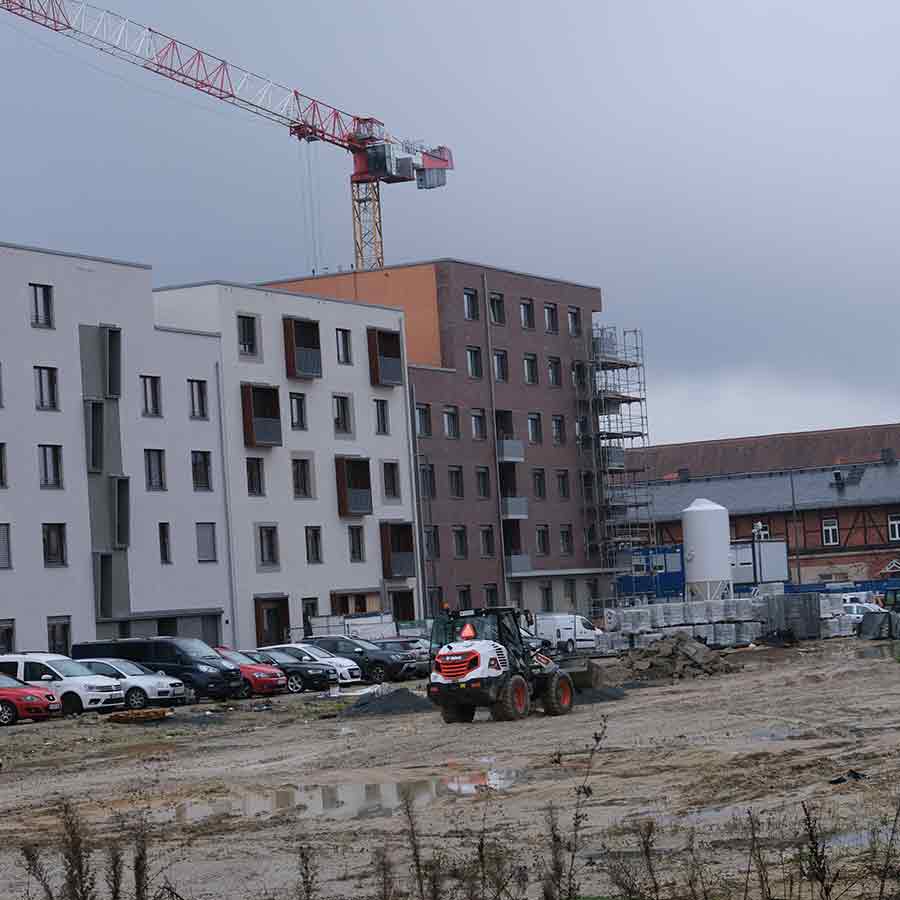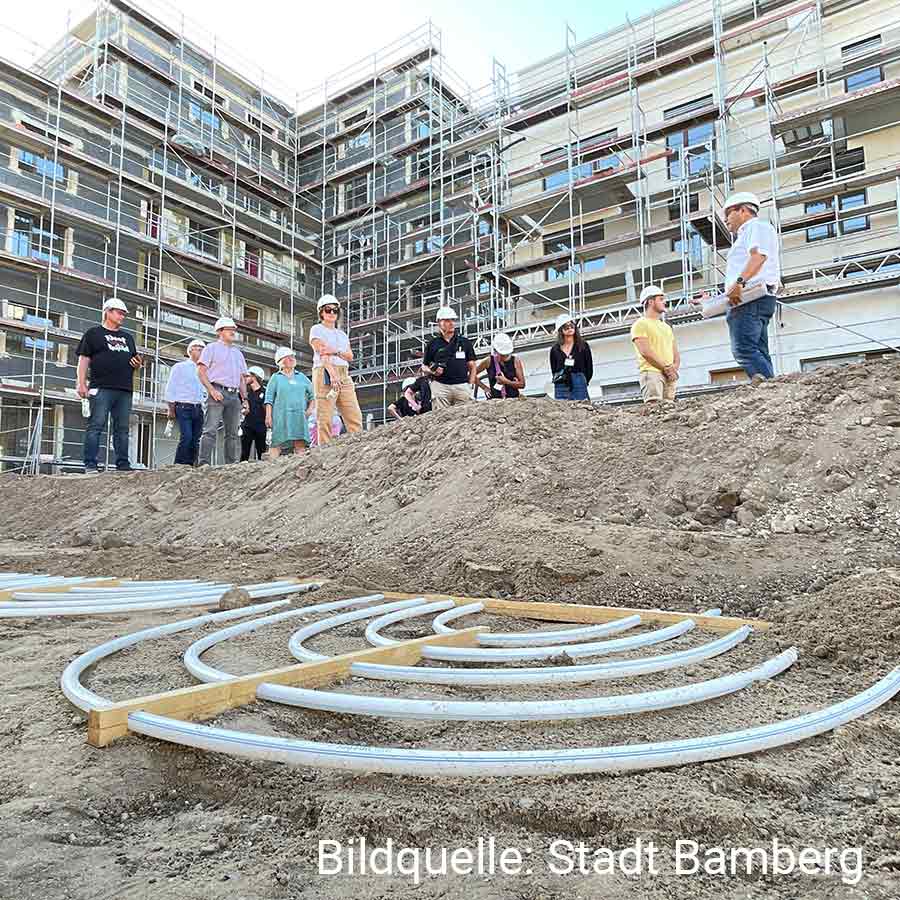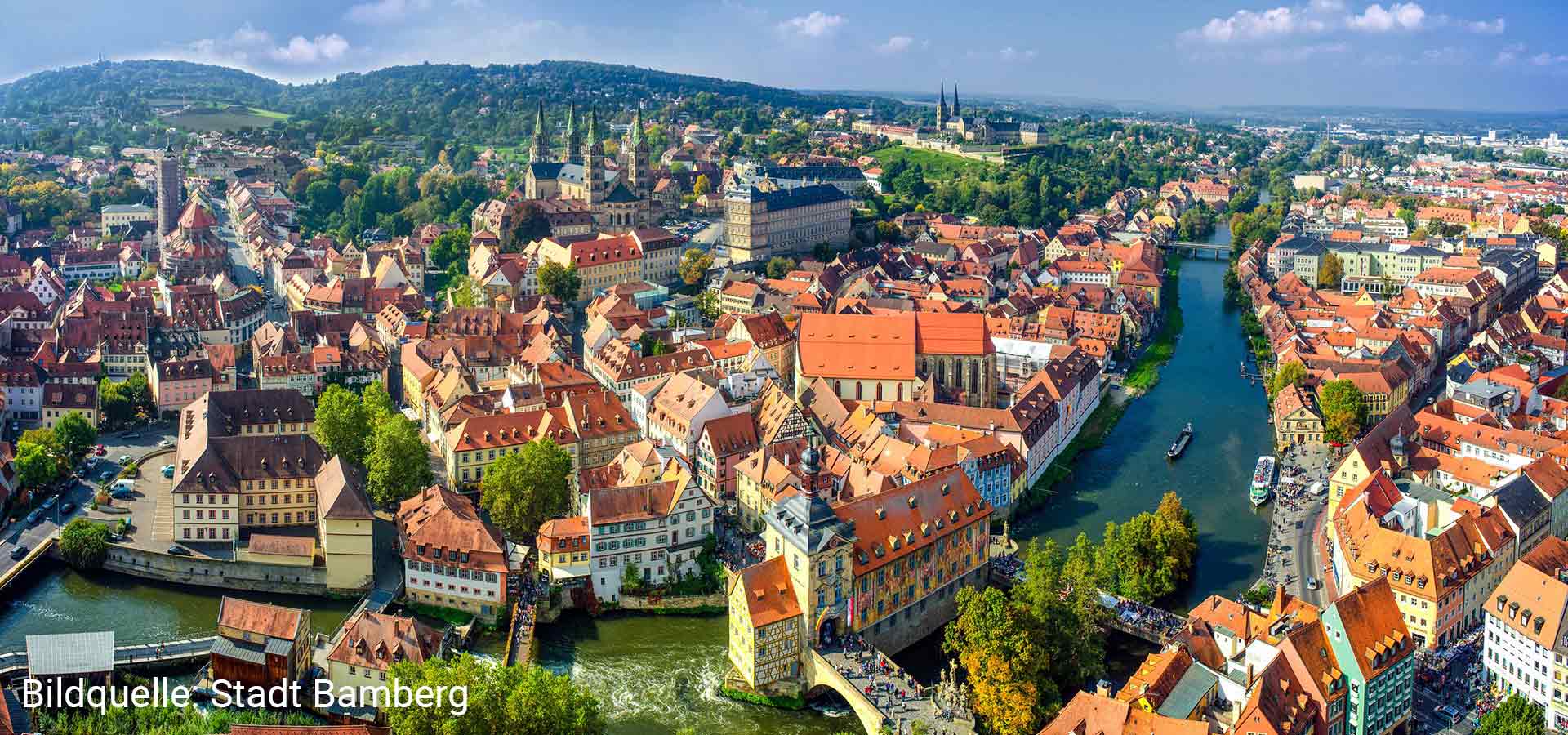The garrison town of Bamberg becomes a climate pioneer
A district Project at Lagarde Campus
It is a jewel in the middle of the picturesque former residence and garrison town of Bamberg, about 60 kilometers north of Nuremberg. Apartments for around 2,400 people are being built on around 200,000 square meters. For this purpose, Stadtwerke Bamberg has developed a climate-friendly concept for energy and heat supply. Heat pumps are an essential part of this.
ca. 70
heat pump
20 ha
Area
ca. 1200
residential units
Unique district concept
Stadtwerke Bamberg generates around 70 percent of the thermal energy it needs in the middle of the city from predominantly renewable resources located directly on the site. This is uncharted territory in an urban infrastructure of old and new buildings, as well as office complexes and commercial spaces. Especially since around a third of the buildings are listed old buildings.
CLIMATE PROTECTION
Ground probes, collectors and wastewater supply the heat pumps with more than enough primary energy all year round, regardless of the weather – and at an almost constant temperature level. The majority of the electricity required to operate the heat pumps is generated from photovoltaic systems. These supply about 1,640 megawatt hours of electricity annually.

Around 70 heat pumps in Lagarde West
In order to keep distribution distances short and to be able to use a cold local heating network, the municipal utilities decided to install heating centers in the individual new buildings. Compared to heat pumps installed in the apartments, this has the additional advantage of lower maintenance and servicing costs. Between one and three heat pumps perform their duties in these heating centers.
Cold local heating network for new buildings
One energy efficiency effect that the Bambergers are taking advantage of is the distribution of energy flows via a cold local heating network. This cold network supplies primary energy to the heat pumps in the district heating centers. Due to the low temperature level, there are no distribution losses. In addition, the cold local heating network offers the possibility of gently cooling the connected buildings in summer.
Warm local heating network for old buildings
For the heat supply to the old buildings, Bamberg relies on a warm local heating network. There, the affiliated waste-to-energy plant feeds in the heating energy from the incineration of waste.
In addition, there is a highly efficient, natural gas-fired combined heat and power plant that also supplies electricity to operate the heat pumps. The process heat generated in this way is collected in a hot-water buffer tank and, if required, supplied to the existing buildings via the warm local heating network.
Heat generation through geothermal energy
The heat pumps draw around 1,200 megawatt hours from the ground. The geothermal energy is extracted from more than 55 geothermal probes that reach up to 120 meters deep into the ground. In addition, horizontally laid ground collectors are used over an area of around 20,000 square meters. The special feature here is that some of the collector fields are located under the new buildings. To prevent the collectors from drawing heat from the buildings above them, there is a layer of insulation between the foundations and the collectors.
A further 2,230 megawatt hours of primary energy is generated by waste heat from the wastewater produced by households on the site and the entire eastern area of Bamberg. To tap this source, the municipal utility has installed stainless steel heat exchanger mats on the bottom of the sewer over a length of 250 meters – a total of 750 square meters.
Intelligent control
To be able to use the energy optimally, the city relies on intelligent control. This ensures that the heat pumps use the electricity from the PV system that is not directly required to generate hot water. The system controller is also responsible for the optimal use of heat and power demand. The same applies for the recycling of other energy that accumulates in the system but is not used.










